Key Features
Accurate
No interferences from maltotriose or other sugars.
Easy
No chemical expertise necessary.
Fast
Measuring time 12 minutes.
Versatile
Measure in the lab or in the production environment.
The Direct Road
To Sugar Testing
Biosensor
Gets the measuring results from the reader via USB or BT. Helps reviewing and organizing the data, creating pdf or xls result files, LIMS connection.
Reader
Handheld device that measures the electrical sensor current. An integrated QR code scanner reads in the sensor calibration constants.
Support
Technical support, assistance on validations and new applications.
PC Software
Gets the measuring results from the reader via USB or BT. Helps reviewing and organizing the data, creating pdf or xls result files, LIMS connection.
Why choose DirectSens® Maltose & Glucose?
- HPLC: High invest, high complexity, typically used in large labs with high sample throughput.
- Outsourced HPLC (contract lab): High costs, long waiting times – often three or more days.
- Enzymatic test kits: Complex procedure taking > 40 minutes, results often show falsely high readings due to interference from similar sugars like maltotriose and maltotetrose.
- The DirectSens® Advantage: Low initial investment, simple workflow, and results in about 12 minutes — with no interference from similar sugars. That means faster decisions, lower costs, and accurate data you can trust.
Results after 12 minutes
No calibration work, no cleaning.
1. Dilute
Prepare a stock dilution and one buffer dilution for the glucose measurement, one for maltose.
2. Incubate
Incubate the maltose dilution (10 min. at 53 °C).
3. Scan
Transfer the calibration constants with a QR scan.
4. Measure Glucose
Apply 100 µl diluted sample to the biosensor and wait for 35 seconds.
5. Measure Maltose
Apply 100 µl diluted sample to a second biosensor and wait for 35 seconds.
Multiparameter System
We designed our biosensor system for multiparameter capability. The variety of available sensor types will continuously increase over the next years.
Currently available
OatSens® – Maltose & Glucose for sugar free oat or rice drinks (3 min. measuring time)
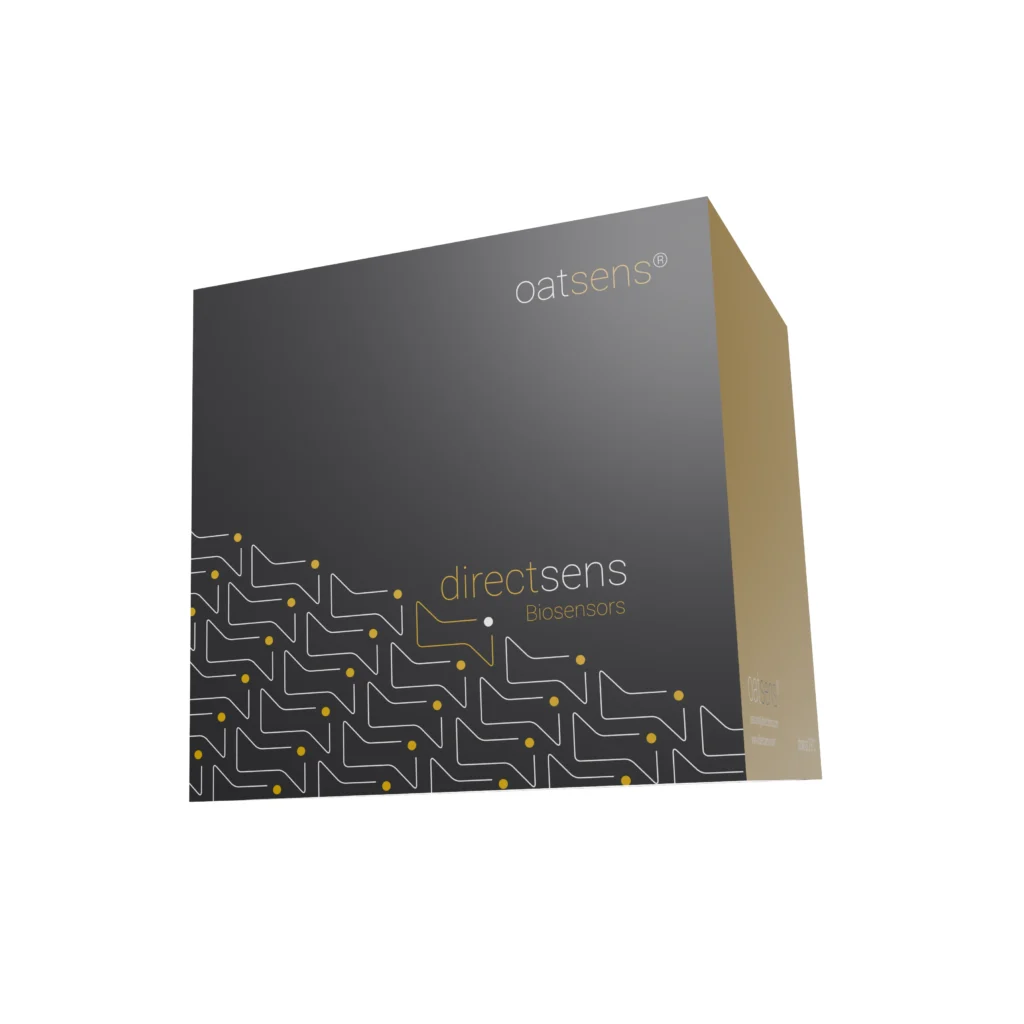
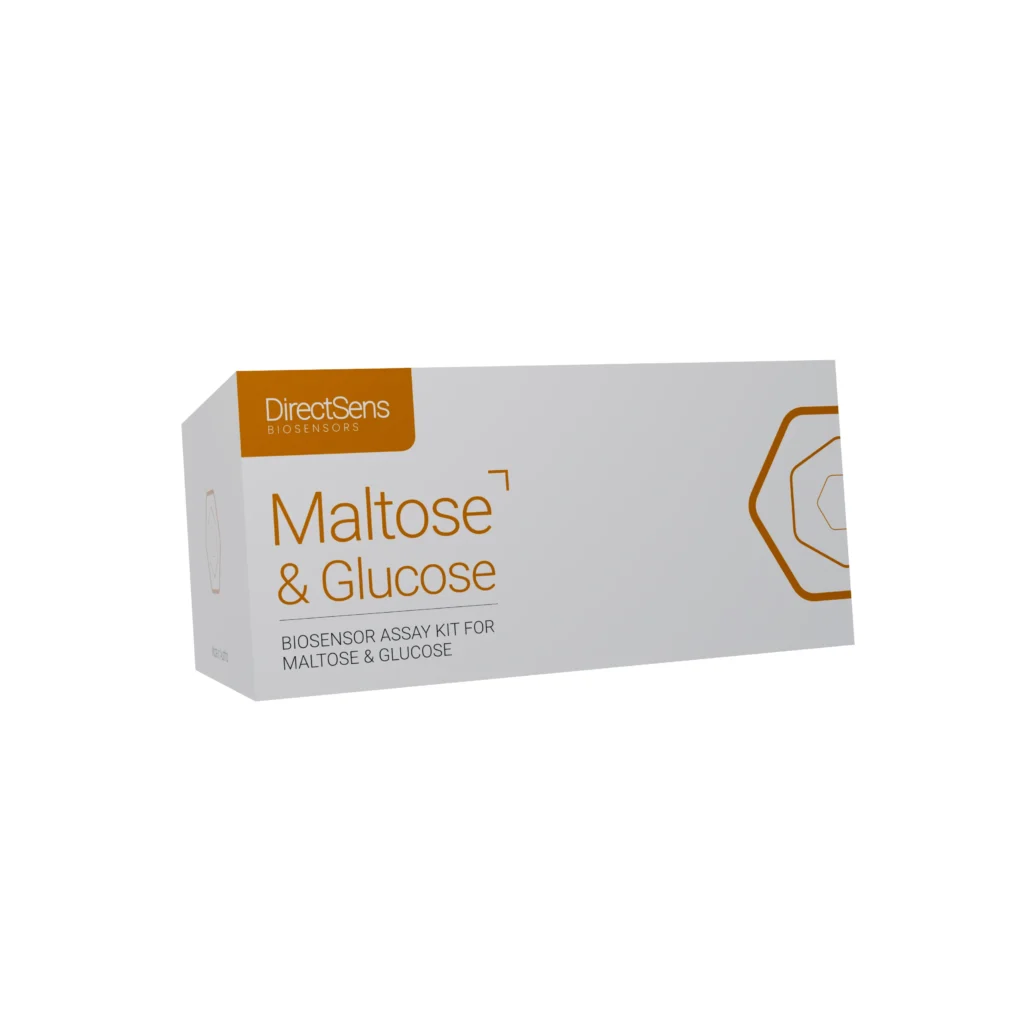
2025
Maltose & Glucose
2026
Alcohol, Glucose only and Sucrose
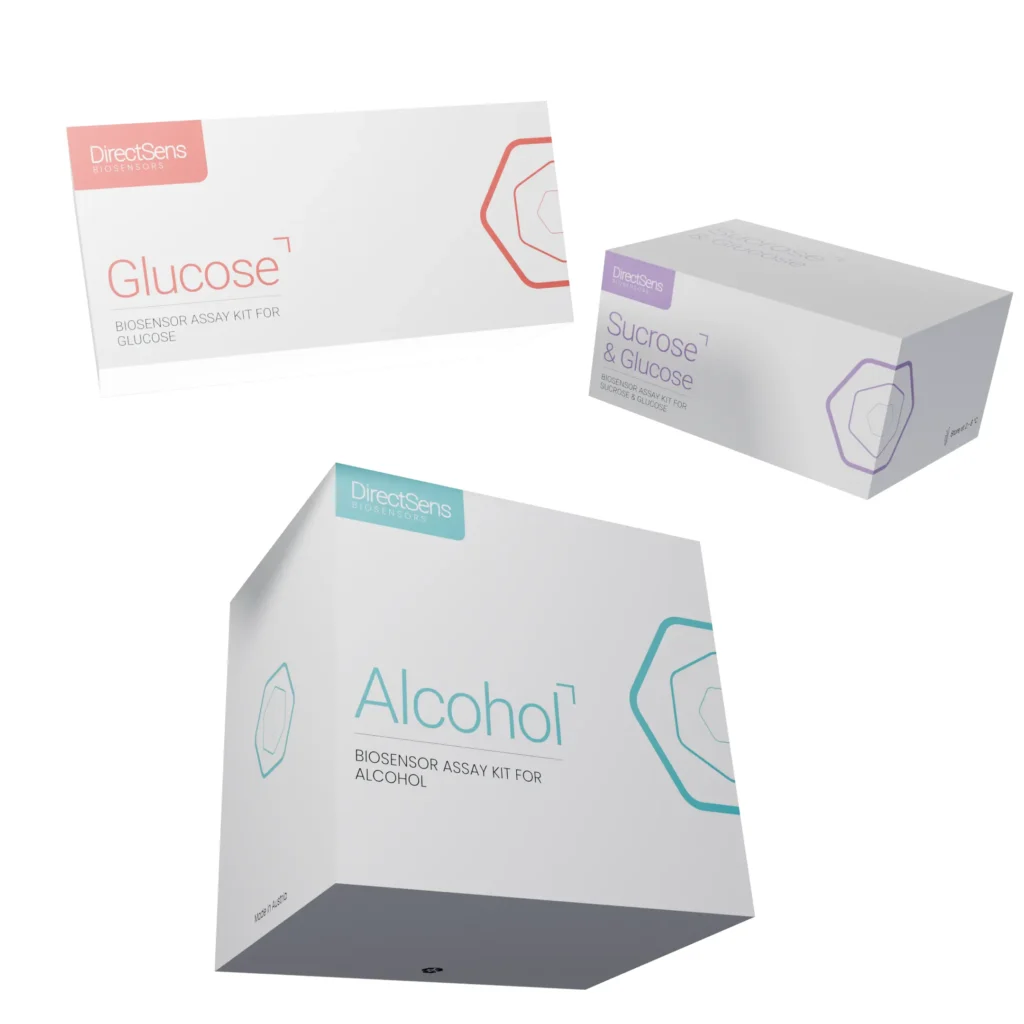
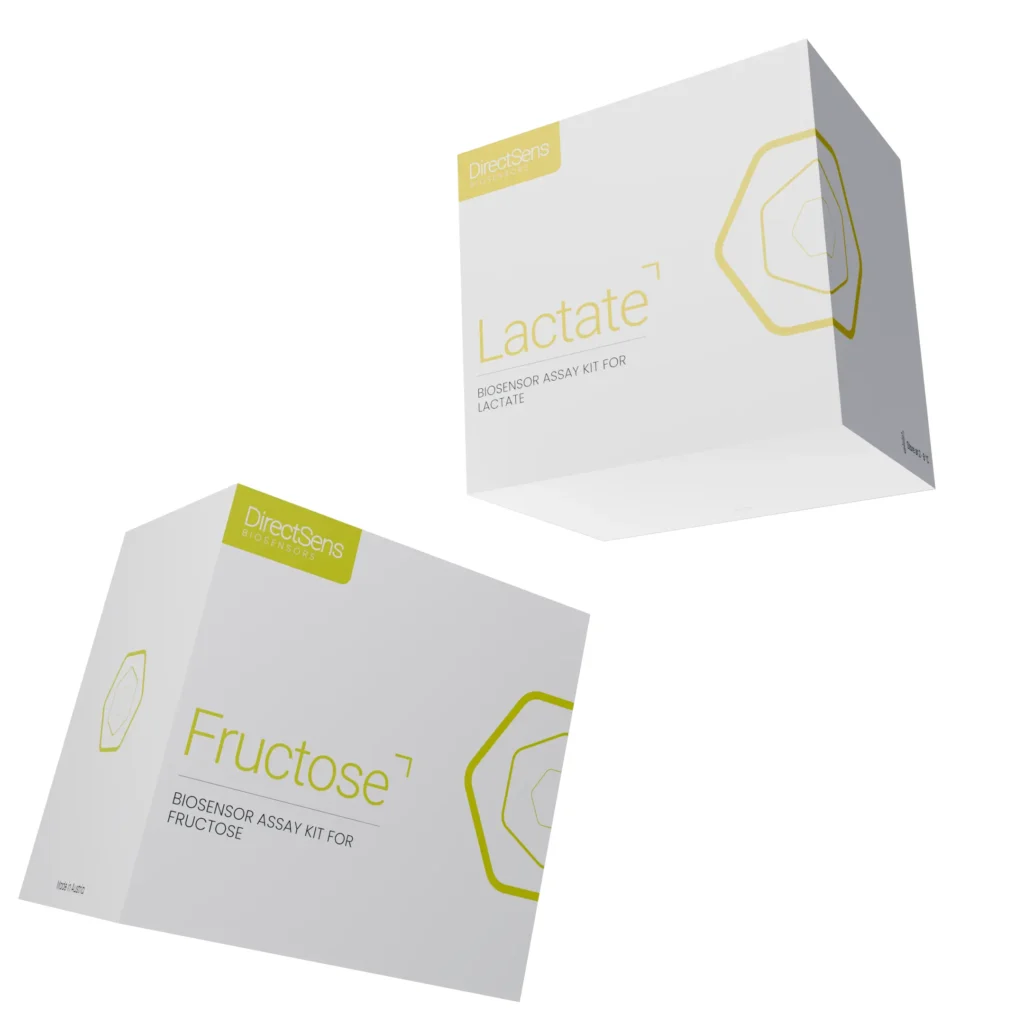
2027
Fructose and Lactate
Future
Further parameters according to customer demands
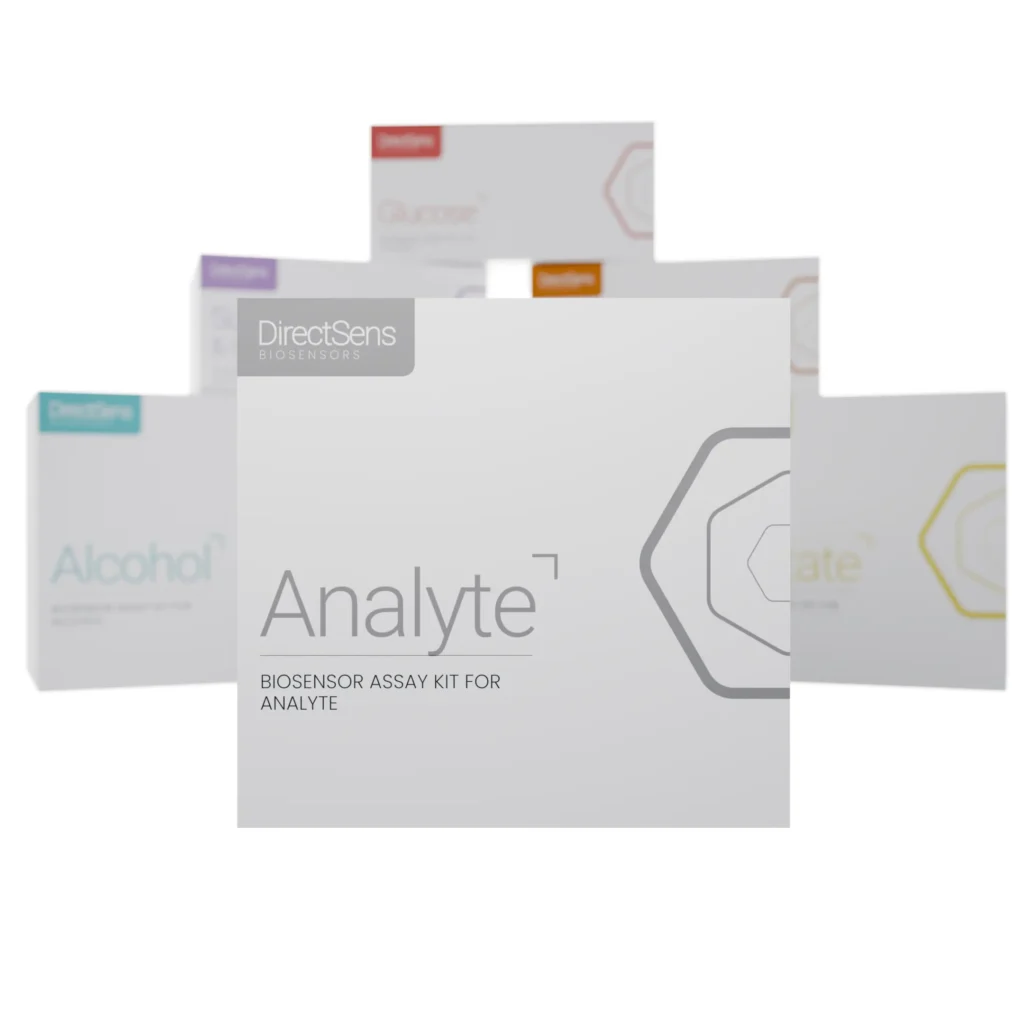
Products
DirectSens®
Maltose & Glucose Kit
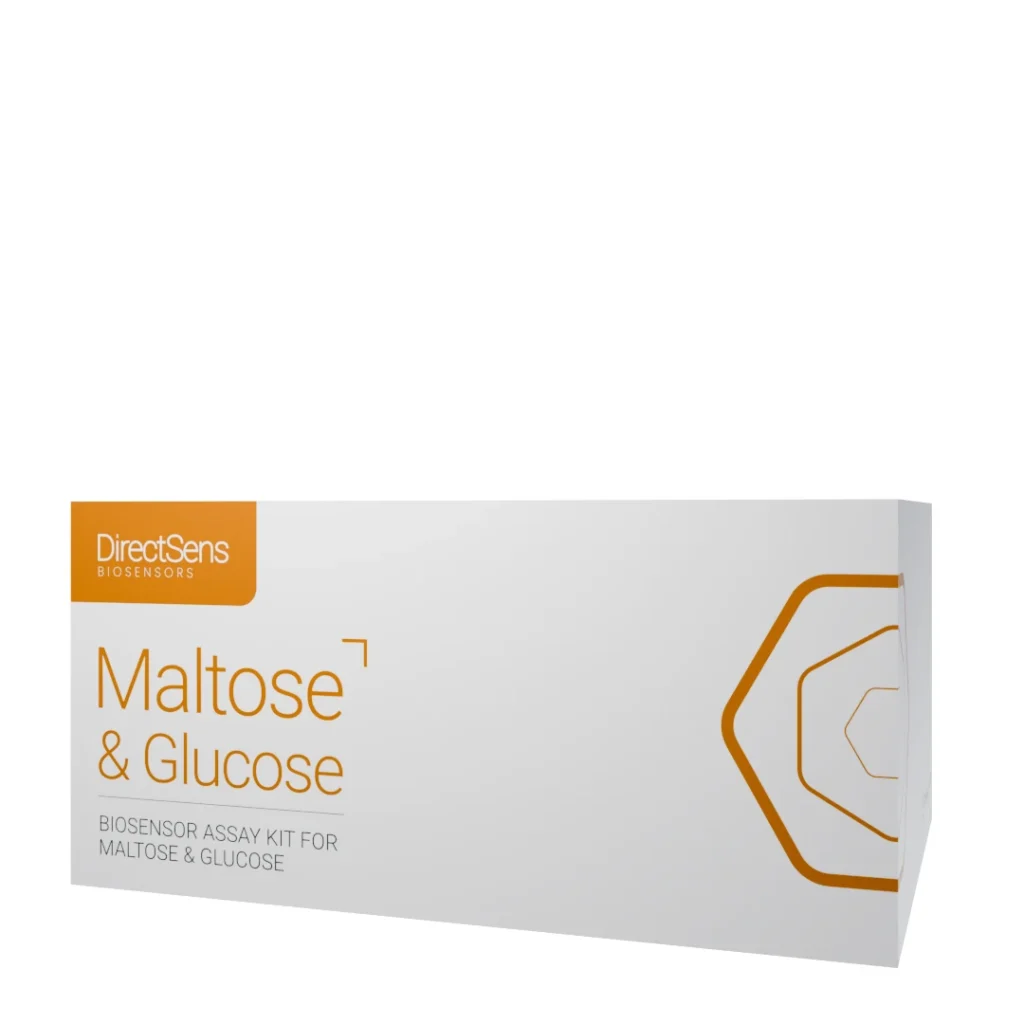
- Verified applications: Oat, rice, spelt drinks and malt extracts
- Measuring range Maltose: 6 – 120 g/L
- Measuring range Glucose: 2 – 120 g/L
Included:
- 2 x 25 biosensors, factory calibrated
- 2 x 1.8 ml buffer 1
- 2 x 1.4 ml buffer 2
- 1.4 ml positive control (maltose, glucose)
- User manual
- Quality assurance certificate
- Technical service
DirectSens®
Reader Kit T4
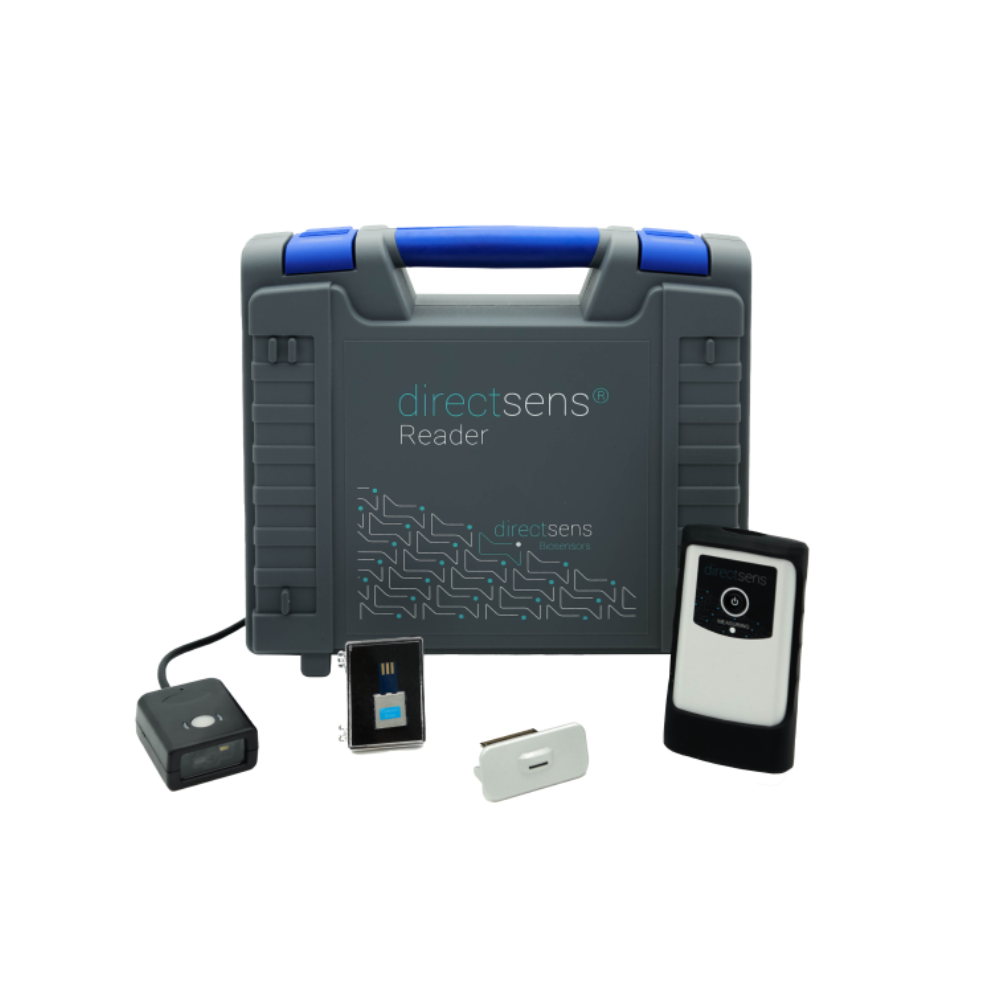
- Handheld (battery powered)
- Touch screen
- Intuitive software
- Multi parameter capability
- Integrated QR code scanner
- USB / BT data exchange
- Robust aluminum housing
Included:
- Reader
- Calibration Device (LM10)
- Manuals (on USB flash drive)
- Spare front adapter
- DirectSens® PC software (on USB flash drive)
- Carrying hard case
Technical Details
Benefits
Only accurate quick method for cereal based samples
The quantification of glucose and maltose in cereal-based samples like oat and rice drinks is challenging because high concentrations of maltotriose and higher glucose oligomers are present which behave chemically similar to maltose.
The DirectSens® Maltose & Glucose Kit is highly robust against cross sensitivities to maltotriose and other sugars. The following concentrations do not interfere with the measurements:
- Maltotriose: 60 g/L
- Sucrose: 60 g/L
- Fructose: 60 g/L
- Lactose: 60 g/L
- Raffinose: 10 g/L
The calibration of the sensors is done by experts in the factory which enables reliable and accurate measurements and saves working time in the lab.
Fig. 1 and Fig. 2 show the measurement results for glucose and maltose in comparison to HPLC measurement results for different commercial oat and rice drink samples including flavored variants (cocoa, cocos, pumpkin seed, hemp protein).


No chemical expertise needed
The user is led by an intuitive software through a simple measurement procedure. After an initial training on how to use a pipette and how to perform the measurement, anyone can do it – chemical expertise is not needed. Calibration work is not necessary – the sensors come readily factory calibrated.
No problems with turbid or coloured samples
After preparation of the stock dilution with deionized water, the whole measurement protocol can be carried out in approximately 12 minutes.
Measurement close to the production
Since no harmful, corrosive, or inflammable chemicals are used and no media supply is needed, a lab environment is not necessary for the measurement. Just find any space that is large enough to do the dilution and the measurement and ensure that the room temperature stays between 20 – 24 °C (68 – 75 °F).
Results after 3 minutes
The measurement itself takes approximately two times 1 minute. After a simple dilution with buffer, the protocol can be carried out in about 3 minutes.
Positive control and reader checking tool included
A professional QC operation includes periodic check-ups for the system performance. The standard delivery content of each DirectSens® Biosensor setup includes everything that is needed to do this quickly, reliably, easily and fully tracable including electronic reporting. Two check up procedures are supported:
- Measurement performance check: Each Maltose & Glucose Kit comes with a vial of positive control that can be used to check if the measurement is providing valid results for both maltose and glucose.
- Reader performance check: The reader kit includes an electronic reader check device that can be used for periodical checks of the reader performance.
No maintenance
The reader is maintenance free. If sample liquid accidentally enters the biosensor slot, you can exchange the front part of the reader easily and quickly without the need for service people coming to your place. It´s a simple one-screw operation that anyone can do.
Easy data export / LIMS connection
All measuring and performance check data that was generated using the handheld reader can be quickly transferred to the DirectSens PC software via USB or Bluetooth. The PC software generates xls, csv or pdf files as needed for further data analysis, reporting or LIMS connection.
Small footprint
The reader fits into the palm of a hand – therefore it does not occupy valuable lab space. Just take it out of the cupboard when you need it.
Robust aluminum housing
The housing is made of massive aluminum and protected by rubber parts. Not easy to destroy.
DirectSens tech support
We help you to get your measurements right: With product manuals, application notes, tutorial videos, online trainings, technical service, and application support via email, online or phone – fast, competent, and friendly. All services except training are free of charge.
Certified quality
We work under strict quality control and full ISO 9001 certification to ensure that each product leaves our house in full compliance with the specified performance.
We are the only producer of food biosensors holding an AOAC OMA and a Nordval certificate (for the LactoSens®). We are aiming for equivalent external certifications also for our newer products in the future.
Good for the environment
The electricity consumption of the reader is less than the consumption of the laptop that you need to operate it. All liquids involved in the measurement are water based, nontoxic, nonflammable and can after use be disposed of in the wash basin. Wearing gloves is only necessary in case of allergies against ingredients. The biosensor test strips can be disposed of in standard household waste.
Cost saving
Are you struggling to keep the costs down for your QC operations? Regular measurements not only imply the investment costs for the instrument and the costs per test, but also labor cost, service and maintenance, costs for the lab bench space and delivery costs in case you are sending samples to an external lab.
In comparison to other methods, DirectSens® Maltose & Glucose is an effective way to save on total costs of operation (TCO) if you have a low to medium sample throughput:
| Total Cost of Operation per year [€] | |||
Samples per year | HPLC (internal) | HPLC (contract lab) | Enzym. Kit | DirectSens® |
50 | 13.625 | 4.667 | 5.225 | 2.858 |
100 | 14.625 | 9.333 | 7.525 | 5.342 |
300 | 18.625 | 28.000 | 16.725 | 15.275 |
Sweetness in Vegan Drinks
During oat or rice drink production, starch molecules are enzymatically converted into short chained dextrins like maltotriose and –tetrose and finally to glucose and maltose. Glucose and maltose define the sugar content that needs to be stated on the product label as part of the nutritional information. Regular monitoring of glucose and maltose therefore is the key to ensure a consistent sweetness profile and to maintain regulatory compliance.
Areas of Use
Product Development:
Sweetness is the most critical sensory properties of your product. DirectSens® Maltose & Glucose enables you to leverage the distinct sweetness profiles of maltose and glucose to create exceptionally tasty products.
Process Optimization:
Evaluate the impact of various raw materials, enzyme dosages, and processing conditions on your production process.
Production Scale-Up:
Validate the performance of new production lines as you scale up.
Batch Release:
Prevent legal issues and customer complaints by ensuring that every batch of your product is in line with the nutritional information that is stated on the label.
Free Validation Service
You want to test DirectSens® Glucose & Maltose for your food or beverage samples? Just send us up to three stabilized samples. We measure glucose and maltose with our biosensor system and share the results with you. You can send the same set of samples to a lab for HPLC analysis to have trustable reference results. We offer three analyses per customer free of charge.
Measurement
Verified sample matrices
Oat, rice, and spelt drinks (liquid and powder), malt extracts
Measuring range maltose
6 – 120 g/L
Measuring range glucose
2 – 120 g/L
Repeatability st. dev. glucose
< 7 %
Repeatability st. dev. maltose
< 10 %
Reproducibility glucose / maltose
< 10 %
Recovery glucose
1 – 10 g/L: ± 1 g/L; 10 – 120 g/L: ± 15 %*)
Recovery maltose
1 – 10 g/L: ± 2 g/L; 10 – 120 g/L: ± 15 %*)
Measuring time (after stock dilution)
12 min.
Minimum sample amount
100 µl
Sample and ambient temperature
20 – 24 °C (68 – 75 °F)
Measuring principle
Electrochemical biosensor
Environmental / safety hazards
All chemicals are water based, nontoxic, nonflammable
Shelf life of biosensors, buffer and positive control
12 months at 2 – 8 °C (36 – 46 °F)
*) 92 % of industrial product samples within limits
Electrochemical Reader
Dimensions
125 x 65 x 32 mm (4.92 x 2.56 x 1.26 in)
Housing
Anodized aluminum with rubber sleeve
Weight
407 g
Display
58 x 44 mm (2.28 x 1.73 in) touch screen
Battery
Li-Ion rechargeable, ≈ 7 hrs. lifetime
Data interfaces
USB C, Bluetooth
PC / Software
PC requirements
- Windows 10 or 11
- 25 MB free hard disk space
- 1 × free USB A port
Output file formats
- XLS
- CSV
Additionally Required Materials
Eppendorfer vials, precision pipettes, pipette tips
Heat block or water bath (53 °C, 127 °F)
Laptop or PC (specifications above)
Optional: Vortex mixer

